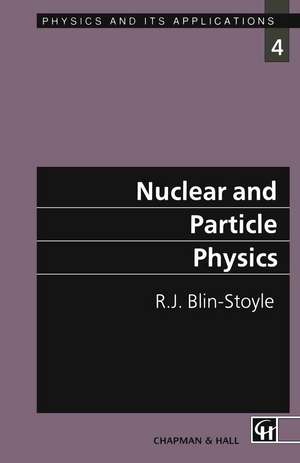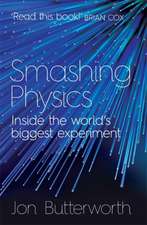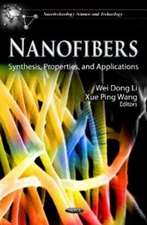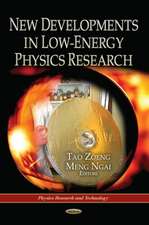Nuclear and Particle Physics: Physics and Its Applications
Autor R.J. Blin-Stoyleen Limba Engleză Paperback – 30 apr 1991
Preț: 381.81 lei
Nou
Puncte Express: 573
Preț estimativ în valută:
73.06€ • 76.47$ • 60.81£
73.06€ • 76.47$ • 60.81£
Carte tipărită la comandă
Livrare economică 31 martie-14 aprilie
Preluare comenzi: 021 569.72.76
Specificații
ISBN-13: 9780412383205
ISBN-10: 0412383209
Pagini: 224
Ilustrații: 224 p.
Dimensiuni: 140 x 216 x 12 mm
Greutate: 0.27 kg
Ediția:Softcover reprint of the original 1st ed. 1991
Editura: SPRINGER NETHERLANDS
Colecția Springer
Seria Physics and Its Applications
Locul publicării:Dordrecht, Netherlands
ISBN-10: 0412383209
Pagini: 224
Ilustrații: 224 p.
Dimensiuni: 140 x 216 x 12 mm
Greutate: 0.27 kg
Ediția:Softcover reprint of the original 1st ed. 1991
Editura: SPRINGER NETHERLANDS
Colecția Springer
Seria Physics and Its Applications
Locul publicării:Dordrecht, Netherlands
Public țintă
ResearchCuprins
1 The nuclear atom.- 1.1 Properties of atoms.- 1.2 Radioactivity.- 1.3 Atomic structure and the nucleus.- 1.4 Nuclear constituents.- 2 General properties of the nucleus.- 2.1 Nuclear sizes.- 2.2 Nuclear mass and binding energy.- 2.3 Nuclear stability.- 2.4 Ground and excited states of nuclei.- 2.5 Nuclear spin.- 2.6 Nuclear parity.- 2.7 Nuclear electromagnetic moments.- 3 The internucleon potential.- 3.1 General form of the internucleon potential.- 3.2 The deuteron.- 3.3 Detailed form of the internucleon potential.- 3.4 Merson theory of the internucleon potential.- 4 Models of nuclear structure.- 4.1 The liquid drop model.- 4.2 The nuclear shell model.- 4.3 The collective model.- 4.4 Development of nuclear models.- 5 Nuclear reactions.- 5.1 Energetics.- 5.2 Nuclear reaction cross-section.- 5.3 The experimental approach to nuclear reactions.- 5.4 Nuclear reaction processes.- 5.5 Scattering and absorption.- 5.6 Coulomb excitation.- 5.7 Direct reactions.- 5.8 Compound nucleus reactions.-5.9 Heavy ion reactions.- 5.10 Fission.- 5.11 Fusion and stellar energy.- 5.12 Comment.- 6 Alpha, beta and gamma decay.- 6.1 Nuclear lifetimes and decay probabilities.- 6.2 Natural radioactivity.- 6.3 Alpha decay.- 6.4 Gamma decay.- 6.5 Beta decay.- 7 Elementary particles and their interactions.- 7.1 Introduction.- 7.2 Tables of elementary particles.- 7.3 Intrinsic particle properties and conservation laws.- 7.4 Conclusions.- 8 The strong interaction.- 8.1 Non-strange hadrons.- 8.2 The quark structure of hadrons.- 8.3 Additional quarks.- 8.4 The quark-quark interaction.- 9 The weak interaction and unification.- 9.1 Introduction.- 9.2 The weak interaction.- 9.3 The electroweak interaction.- 9.4 CP violation.- 9.5 Grand unified theories (GUTs).- References.- Further reading.- Table of physical constants.- Problems.- Answers to problems.


















